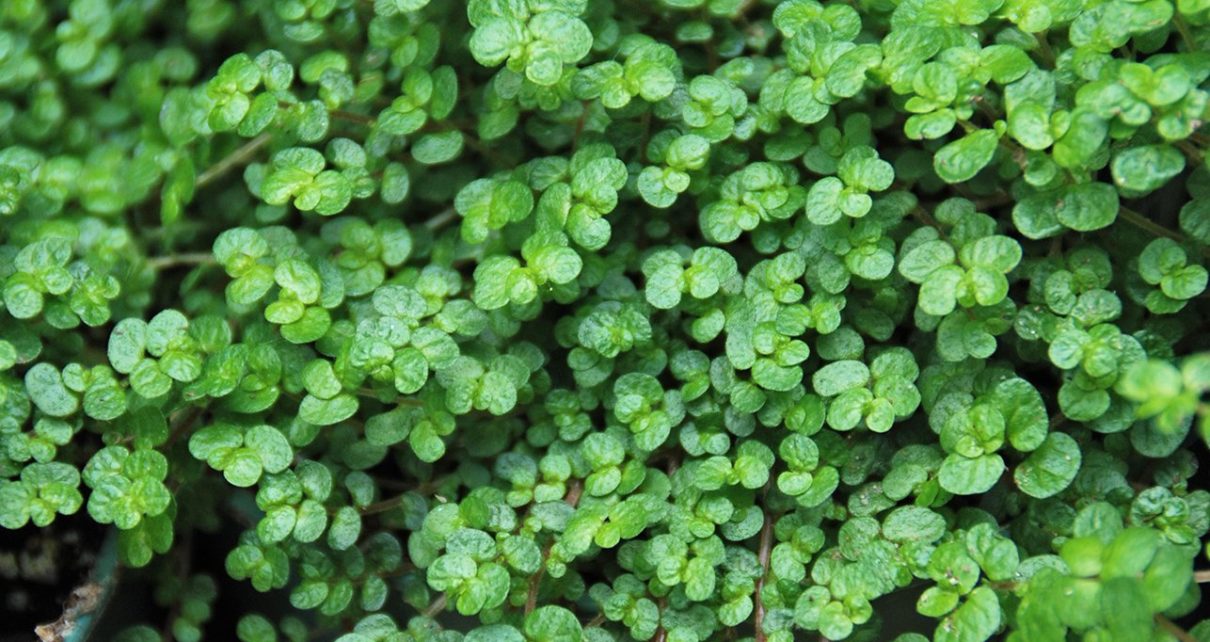Photo caption: Baby tears plant (Soleirolia) is safe for pets and should be grown in brighter light conditions. Photo credit: Melinda Myers, LLC
By Melinda Myers
You love them both – your pets and houseplants – but it can be challenging to safely raise them together in the same house. Reduce the risk by selecting pet-safe plants and safely managing houseplant pest problems.
Avoid problems by selecting plants suited to your home’s growing conditions and gardening style. Then narrow the list further to plants that are non-toxic specifically to the type of pets you own. Consult with your veterinarian and visit the American Society for the Prevention of Cruelty to Animals (ASPCA) website for a list of pet-safe and toxic plants.
Create a list of all the plants you are growing. Include both common and botanical names for accurate identification. Do a bit of research on the care they need and their toxicity to your pets. If you suspect your pet has ingested a toxic plant, you’ll have the proper plant name when contacting your veterinarian.
Match the pet-friendly plants you select to their preferred light conditions. An east- or west-facing window provides enough light for most indoor plants. Keep those that need brighter light within two feet of the window. Those that prefer lower light can be grown near a north-facing window or up to six feet back or off to the side of an east- or west-facing window.
For low light situations, consider cast iron plant, Lady palm, and parlor palm or add artificial lights when growing other pet-friendly plants in lower light situations.
Grow grape ivy, spider plants, baby tears (Soleirolia), peperomias, prayer plants, Boston ferns, ponytail palm, and hoyas in brighter locations. Save the brightest locations for Norfolk Island Pine, lipstick plant and haworthia.
Add some color to your indoor garden with popular flowering plants like African violet, Christmas cactus and moth orchid. These are also listed as non-toxic on the ASPCA website.
Water plants thoroughly as needed. Tropical plants prefer slightly moist soil, while cacti and succulents like it drier. Always pour off any excess water that collects in the saucer. Allowing plants to sit in water can increase the risk of disease and lead to root rot.
Regularly groom and wipe dust off the leaves of your indoor plants to help reduce the risk of insect damage. Remove spotted leaves when they appear and adjust watering. This is often enough to correct fungal disease problems.
When pest problems require control, always select pet-friendly options. Start with a strong blast of water to dislodge pests like aphids and mites. Follow with an application of a lightweight horticulture oil such as Summit Year-Round Spray Oil (SummitResponsibleSolutions.)
Melinda Myers has over 30 years of gardening experience and has written over 20 gardening books, including Small Space Gardening. She hosts The Great Courses “How to Grow Anything: Food Gardening For Everyone” DVD set and the nationally syndicated Melinda’s Garden Moment TV & radio program.





